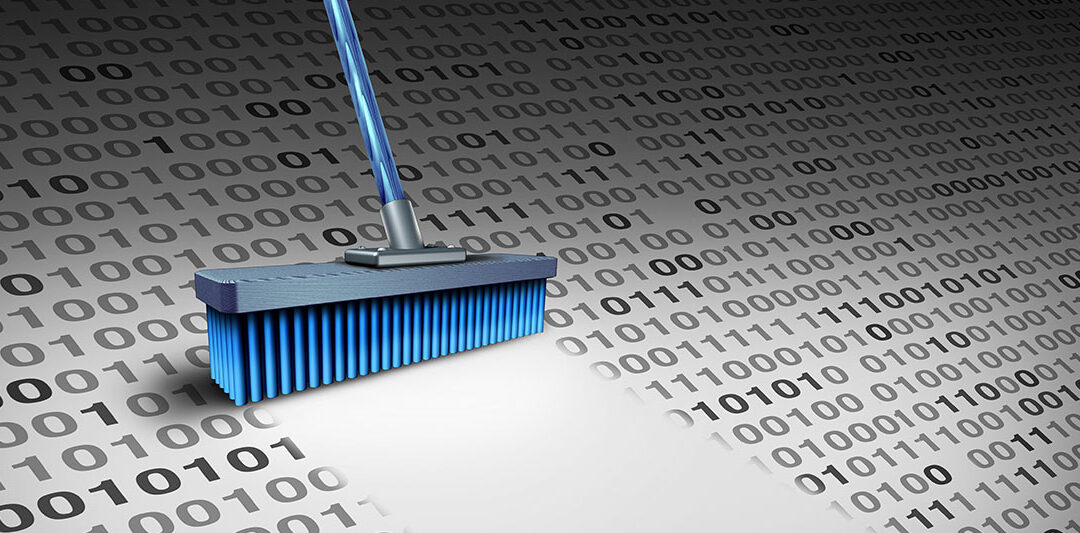In our last blog post, we explored the importance of taking stock of your organization’s relationship with data. Now we dig a bit deeper into some strategies to transform the way you undertake “data hygiene” and management. Summer is an excellent time to schedule an audit of these practices in preparation for a busy fall.
Data is one of the fundamental components of any nonprofit organization – if not the most critical element. It plays a role in every aspect of how your organization operates internally and externally. From tracking donations, memberships, event ticket sales to program evaluation and analysis, data is integral to informing fundraising, stewardship and outreach activities. It can help you strengthen current relationships with donors and build new and meaningful connections. Simply put, data helps you get to know your donors better.
The importance of having clean data and a “data hygiene” protocol in place cannot be overstated and the risks are plenty if overlooked. Inaccurate data can result in lost revenue and render your data invaluable and irrelevant. It can expose you to vulnerabilities and security risks and can break the trust of your donors and key stakeholders. Things change with staff turnover, shifting priorities, and donors moving on. Missing or dated information can also impact the overall cleanliness and usefulness of your data.
Those responsible for managing and maintaining your data must ensure there are standards and practices in place to mitigate these risks. Implementing a data audit can ensure you address gaps and risks and set your organization up for success. Starting your clean data journey does not have to be daunting. A solid audit plan might look something like this:
Review
- Determine who has access to data at your organization. How many “hands” touch the information? Consider everyone from the person opening the mail, the person updating an interaction with a donor in your database, to the person who manages donation receipting, etc. Consider limiting the number of users who can input data and those who have viewing rights only (for especially confidential information).
- How do you collect data and what methods are being used? Surveys? Online forms? Direct marketing forms? Website traffic stats? The first step is to ensure that there is standardization and consistency in the data you are tracking.
Secure
- Does your data collection and management comply with provincial and federal privacy laws? Remember that data is sensitive, and your database may contain confidential information.
- Do you honour donor requests for anonymity? How do you track and store this information and is it readily available?
- Does your organization exchange, rent or share donor information? Do you work with third parties to manage direct mail activities? Consider the source of the data and be mindful of how the data is being shared, standardized and imported for fundraising purposes.
Build
- Determine what data is essential to your operations and create a list of “required” vs. “nice to have” information.
- Review industry standards for data collection and build upon best practices from organizations like Canada Post for address standards, validation etc.
- Do you have a data management policy or protocol in place? If not, build a small working group of “power users” who work with the data most regularly to identify areas of attention, data issues and inconsistencies. Spend some time working through each core element and document everything to map out a plan of action.
Test
- Run reports by segment and pull a list of mailing addresses to identify entry and standardization issues. Compare email address formats; has information been duplicated elsewhere? Have some records been “dormant” for a year or more? Review each data point to help inform the clean-up process.
- Run a list of all the records in your database to catch duplicate records and inconsistencies in data entry. This presents an excellent opportunity to reconnect with donors – have they moved or passed away? When is the last time you picked up the phone to check in and ensure their information is correct?
Plan
- Map out a plan on how you will carry out the clean-up. Identify who is responsible for reviewing the data for accuracy, who will carry out necessary research to validate information, and who will be responsible for updating the information.
- Select the right time to clean your data. If you have a large mailing going out next week, scheduling a data audit then is not ideal.
Now That Your Data is Clean…
As you walk through these steps, and by documenting the process, you’ll develop a “clean data” protocol manual, policy or standards of practice. Ideally, this should have oversight by a data governance team at your organization. Don’t have a data governance team? Consider forming one! Once you’ve completed the audit and your clean data management plan, revisit it in six months and then annually. Some tips we recommend:
- Set realistic timelines for data testing and review activities.
- From documenting the process while walking through it, develop a training manual for new employees who will have access to the data.
- Implement a data-backup schedule to safeguard against any issues resulting from data loss – and most importantly, remember that clean data starts at the source!
Consider consulting with experts in the industry who can support you. The Dennis Group can help you start out right or find your way out of the weeds and into better data-informed donor relationships.


Recent Comments